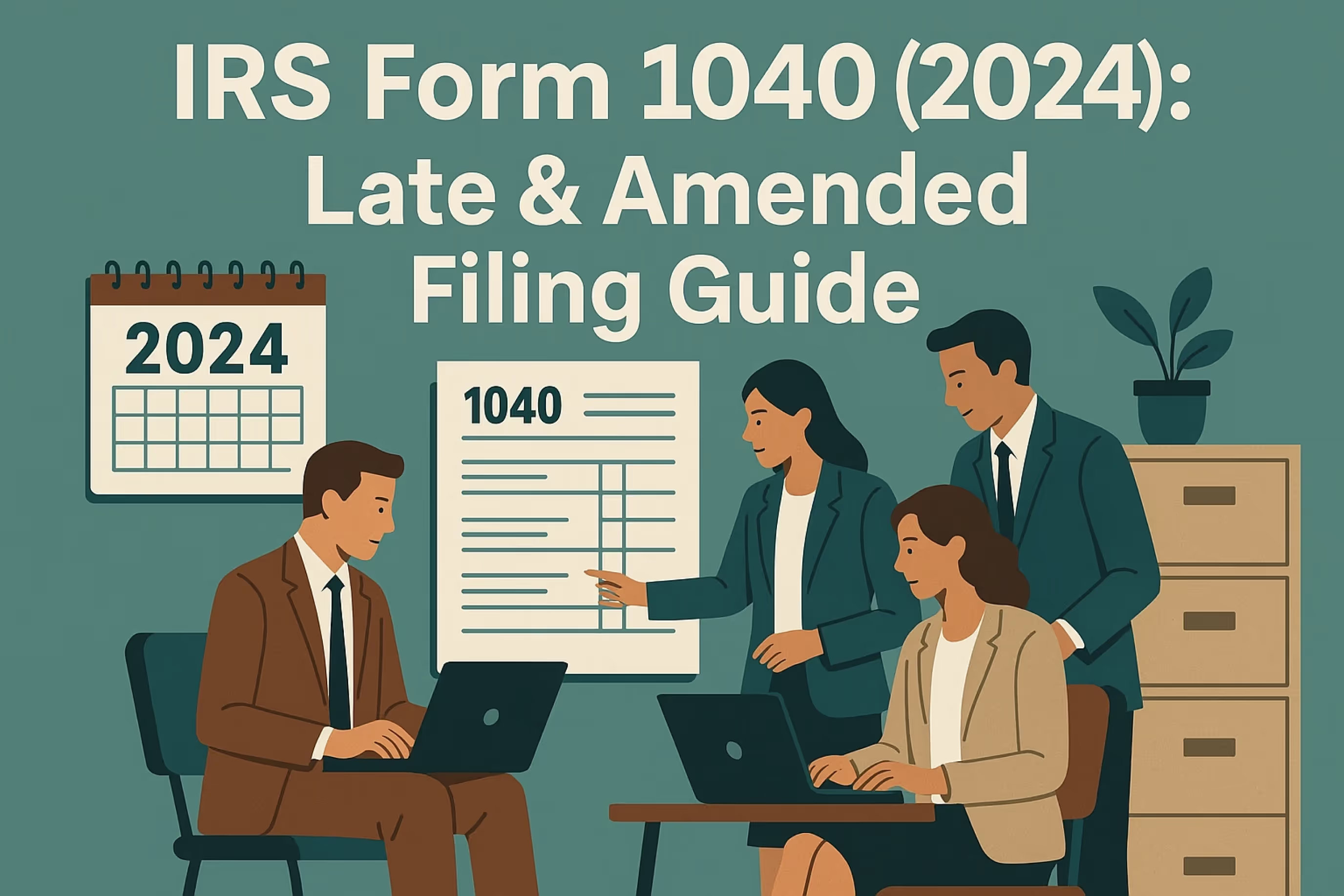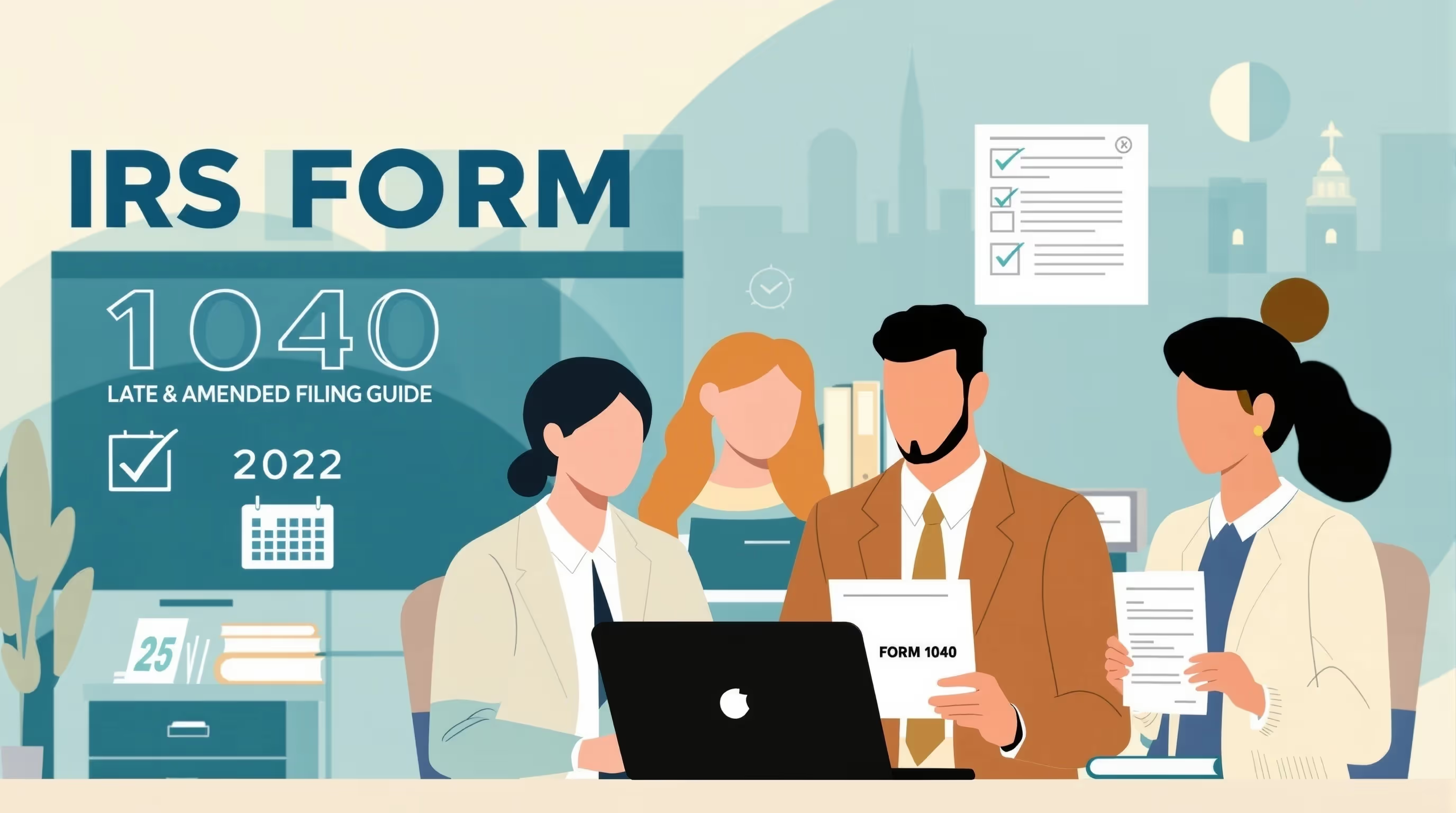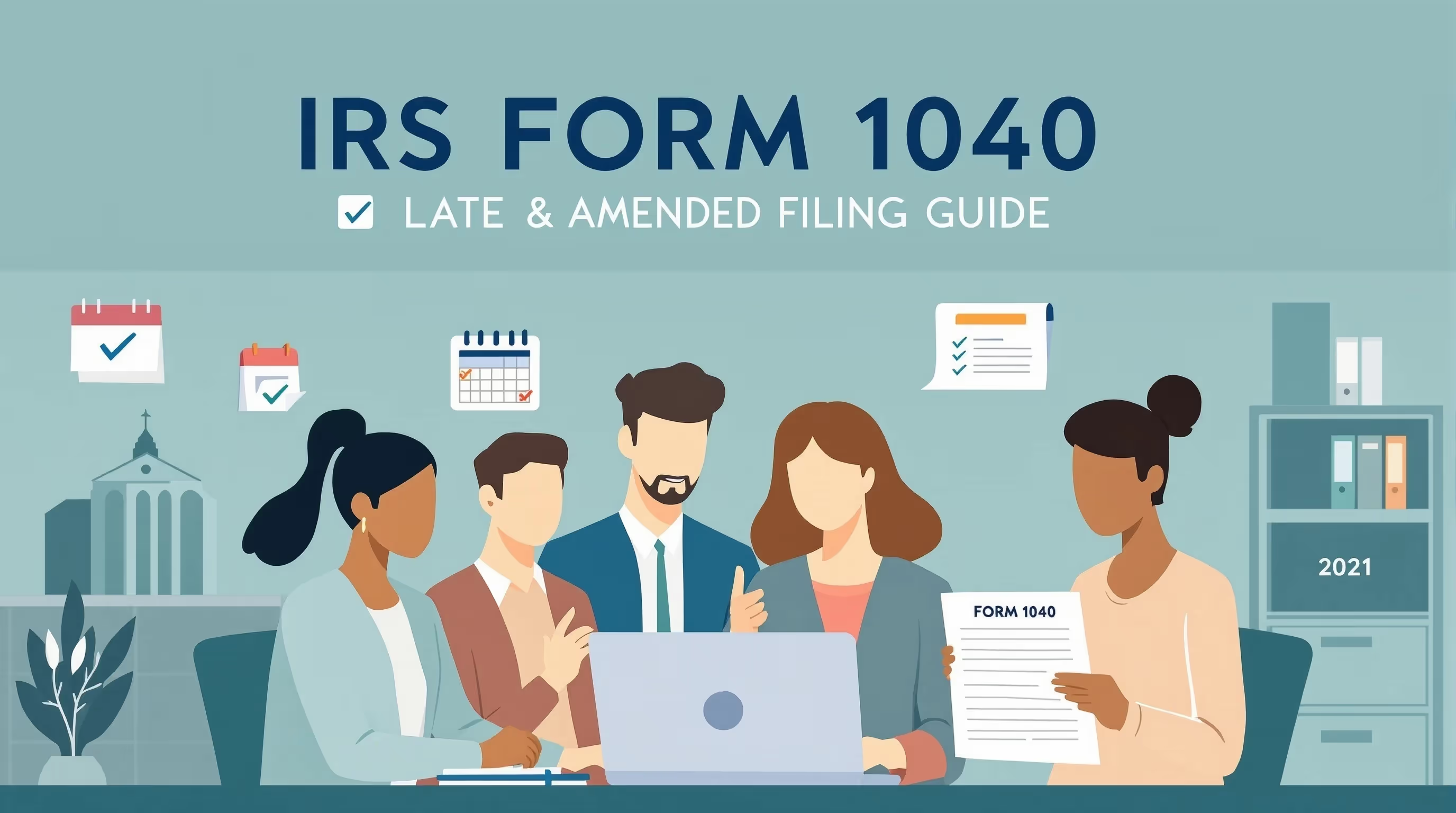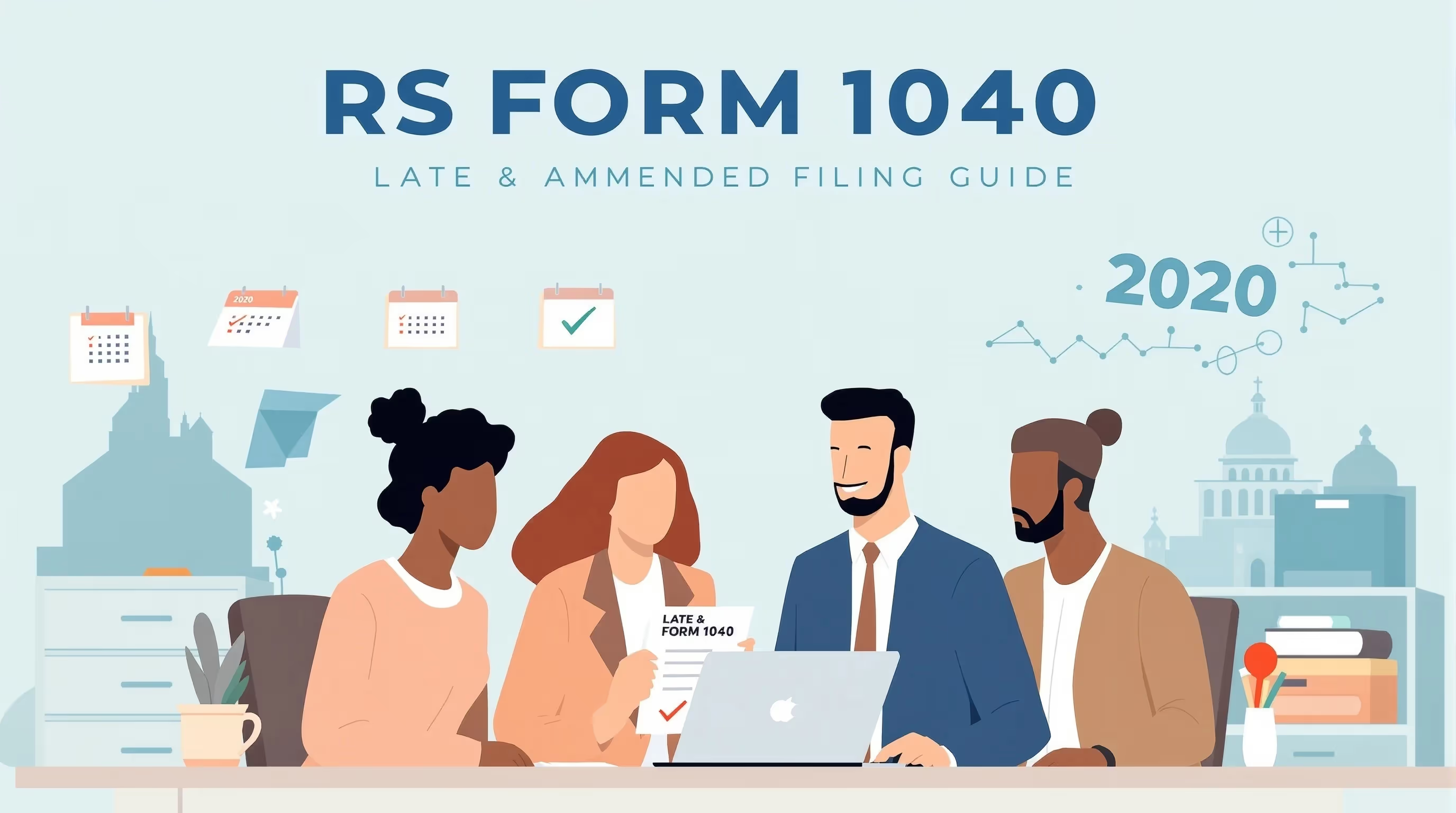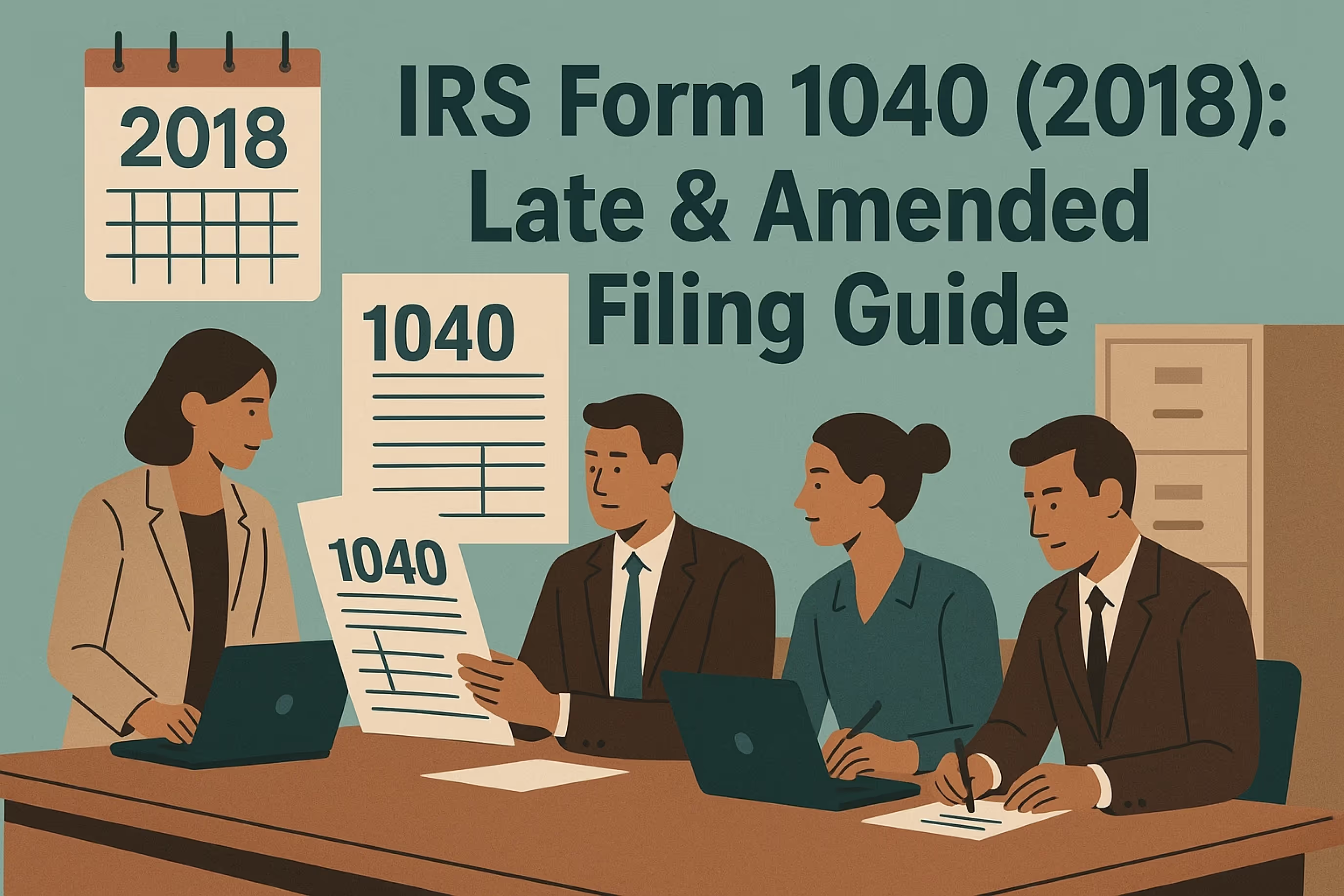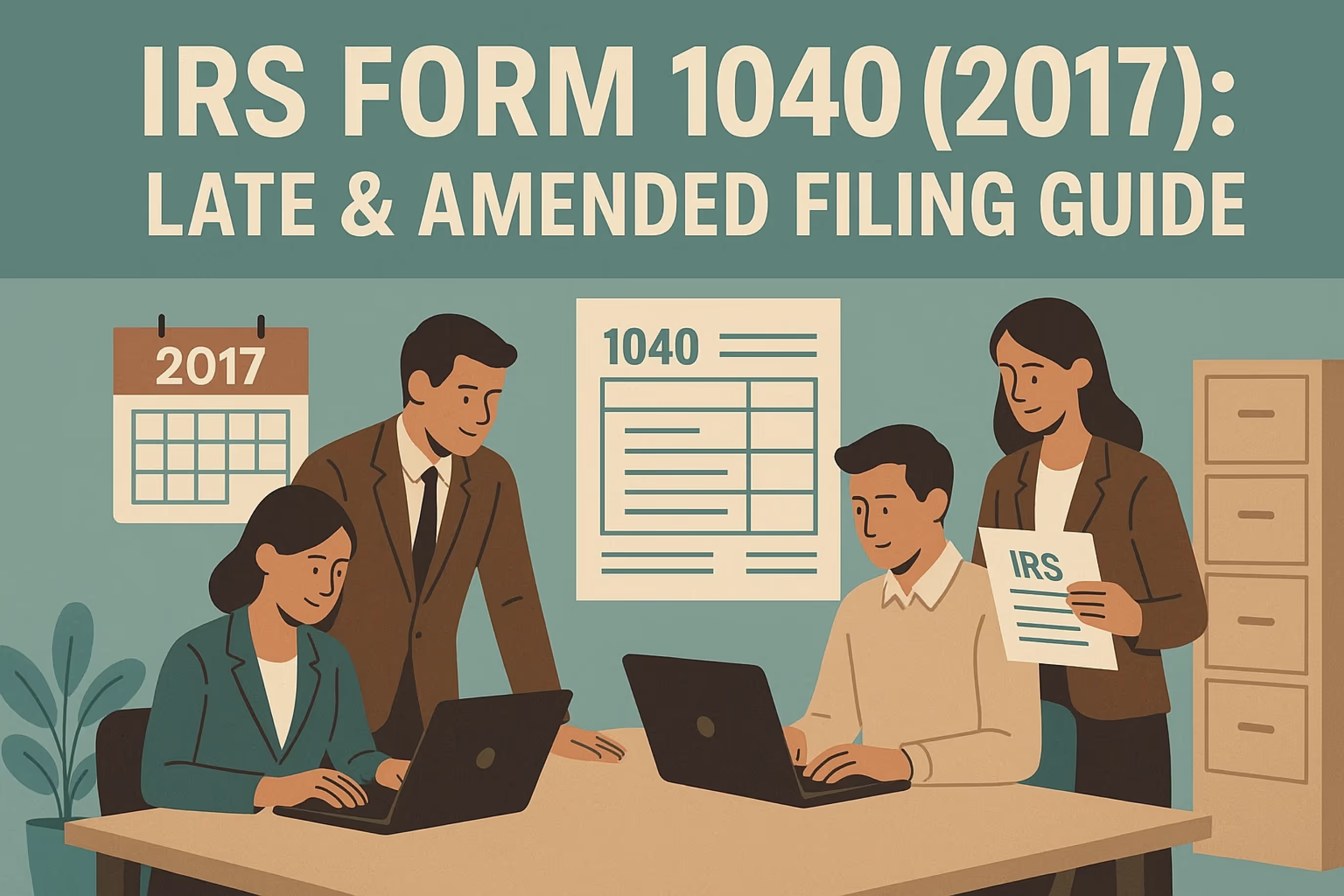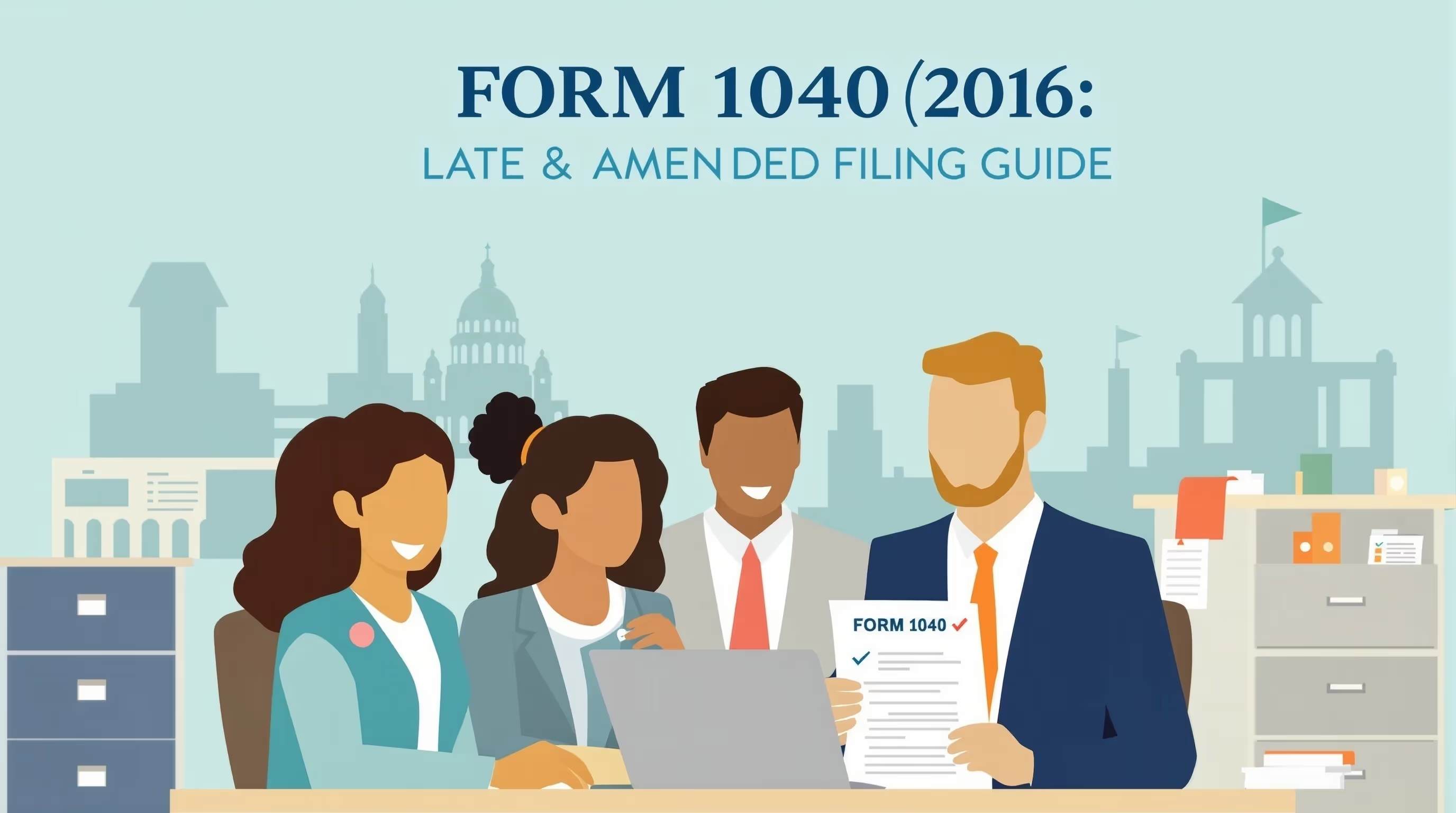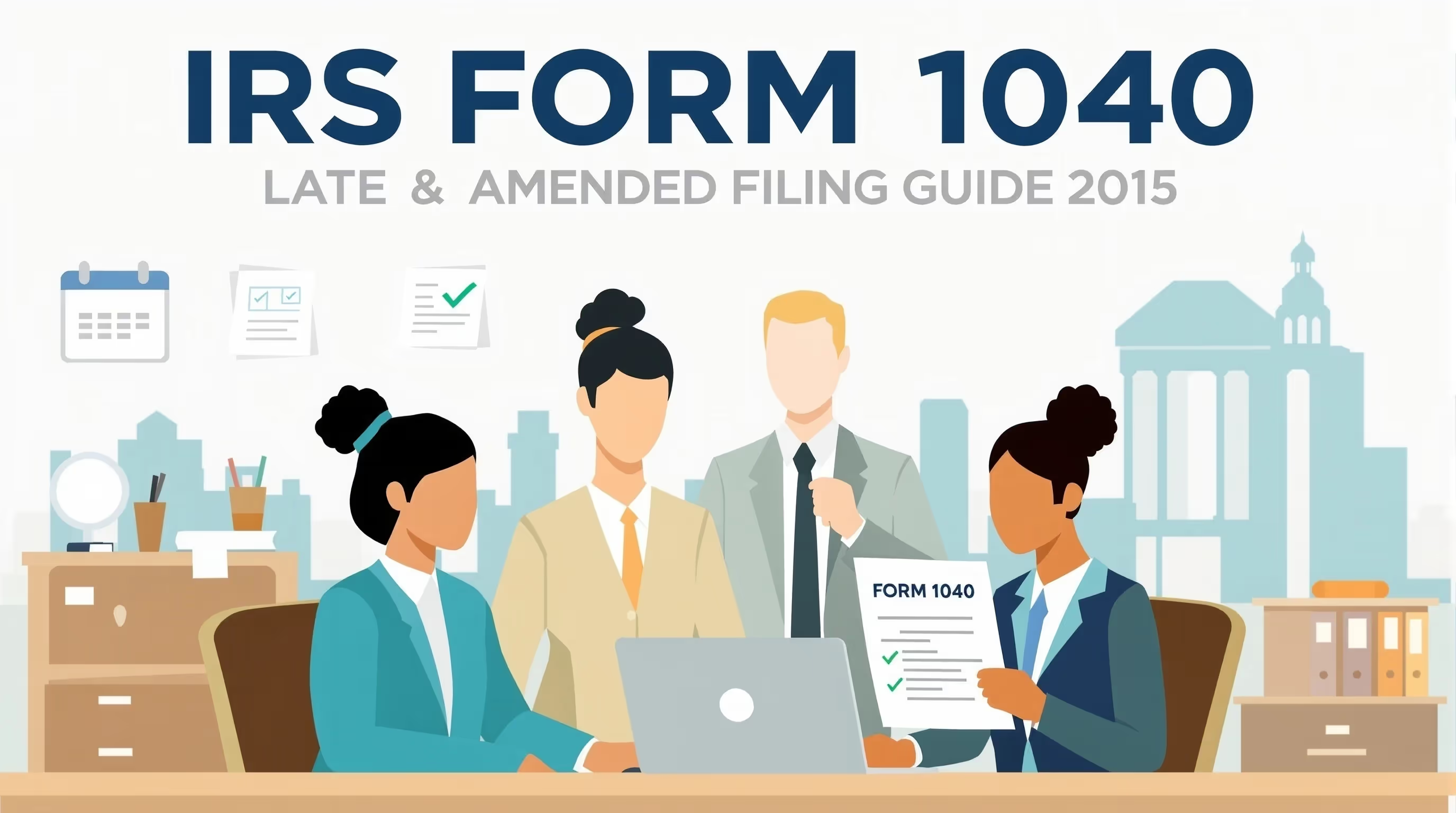IRS Form 1040 (2023): Late & Amended Filing Guide
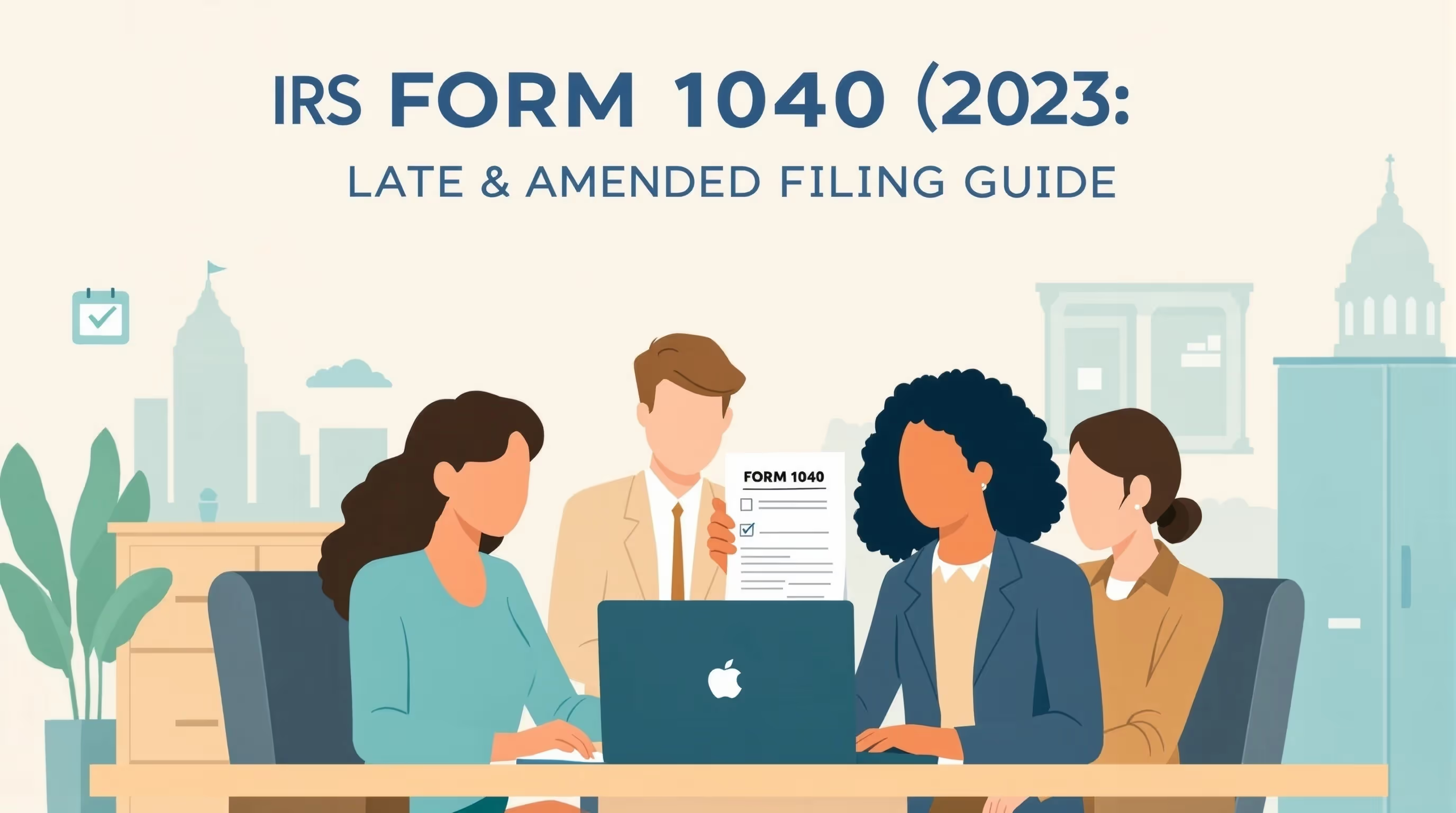
What IRS Form 1040 (2023) Is For
IRS Form 1040 (2023) is the standard federal income tax return that U.S. taxpayers use to report income, claim deductions, and apply refundable credits for the 2023 tax year. It determines whether you owe taxes or qualify for a tax refund. Most individuals and small businesses with taxable income are required to file their tax returns on an annual basis.
The Internal Revenue Service (IRS) uses this form to calculate your income tax liability and determine whether a tax payment or refund is due. Failing to file taxes or underreporting income can result in IRS penalties, interest, and potentially a tax bill from the federal government. Filing an accurate federal tax return on time helps taxpayers avoid penalties and interest and ensures compliance with tax-required laws.
When to File a Late or Amended 2023 Tax Return
You should file a late 2023 Form 1040 if you missed the original tax deadline of April 15, 2024 (April 17 for Maine and Massachusetts residents). Filing after the due date can result in a failure-to-file penalty, a late-filing penalty, and interest on unpaid taxes. Submitting your federal income tax return promptly can limit the maximum penalty and reduce the interest rate charged by the IRS.
If you owe taxes, it’s best to file your tax return even if you can’t pay the full amount. The failure-to-file penalty is 5% of unpaid tax per month, while the failure-to-pay penalty is 0.5% per month. The penalty continues to accrue until the balance is paid in full. Filing prevents additional IRS charges, limits penalties and interest, and shows reasonable cause if you later request penalty relief.
If you find errors such as missed income, deductions, or estimated tax payments, file an amended return using Form 1040X. This helps correct mistakes and claim eligible credits. You generally have three years from the original due date (until April 15, 2027, for 2023 returns) to claim a refund. After that, the federal government keeps unclaimed refunds. Filing your unfiled federal return helps reduce IRS penalties and may replace a substitute return that lacks deductions and credits you qualify for.
Key Rules Specific to the 2023 Tax Year
For 2023, the IRS made several updates that affect federal tax return preparation:
- The standard deduction increased to $13,850 (single), $27,700 (married filing jointly), and $20,800 (head of household).
- The additional child tax credit rose to $1,600 per qualifying child.
- Clean vehicle and residential energy credits are now separated on Schedule 3.
- Self-employed individuals must use Form 7206 for health insurance deductions.
- The required minimum distribution age increased, giving retirees more time to file and plan withdrawals.
Review the IRS Instructions for Form 1040 (2023) before filing or making electronic payments to avoid tax penalty assessments.
Step-by-Step Guide for Late or Amended Filing
Step 1: Gather Tax Transcripts
Request wage and income transcripts from IRS.gov or by calling 800-908-9946. This ensures all employer-reported income and withholding are accurate.
Step 2: Obtain the Correct Forms
Always download the official 2023 forms from the IRS Form Help Center to ensure accuracy.
Step 3: Prepare Your Return
Review your filing status, report all income, and apply eligible refundable credits. Match totals with IRS transcripts to avoid assessed errors.
Step 4: Attach Required Schedules
Include Schedule 3 if you claim estimated tax payments or clean energy credits.
Step 5: File and Pay
You can e-file prior-year returns if your software supports it, or mail them to the IRS. If you owe and can’t pay the full amount, apply for an IRS payment plan using Form 9465. This helps manage your tax payment and reduces the failure-to-pay penalty. If you can’t pay in full, apply for a payment plan using Form 9465. Our IRS payment plan guide outlines qualification rules and how to apply.
Step 6: Keep Records
Maintain records of your return, proof of payment, and supporting documents. These are vital if your filing is reviewed or assessed later.
Common Mistakes and How to Avoid Them
- Incorrect Social Security numbers: Ensure SSNs match IRS records.
- Math or income errors: Use transcripts to confirm totals.
- Wrong filing status: Double-check before submission.
- Unanswered digital assets question: You must check “Yes” or “No.”
- Filing too early: Wait until you receive all W-2s and 1099s.
- Using the wrong year’s forms: Always confirm that you are using the 2023 versions.
Avoiding these errors can prevent IRS penalties, refund delays, and requests for additional documentation. If you prefer a professional to communicate with the IRS on your behalf, consider assigning one using a Power of Attorney form.
What Happens After You File
Late filing by mail typically takes 6–8 weeks to process, while e-filed returns are processed within 2–3 weeks. Amended returns may take 8–12 weeks to process. You’ll receive a refund or a notice about owed taxes. The IRS may offer penalty abatement if you qualify for reasonable cause or first-time relief, helping reduce the impact of late filing and payment charges.
If you owe unpaid tax, the IRS charges interest and may apply additional penalties. The failure-to-file penalty is 5% per month (up to 25%), and the failure-to-pay penalty is 0.5% per month. Both payment penalties continue until your balance is cleared.
If you can’t pay, apply for a payment plan or installment agreement. The IRS may offer flexible terms for those with reasonable cause or financial hardship. The Taxpayer Advocate Service can help if you face penalties or disagree with an IRS assessment.
FAQs
How much are late filing penalties for 2023?
The late filing penalty is 5% of the unpaid tax per month, up to a maximum penalty of 25% of the unpaid tax. If your return is more than 60 days late, the minimum penalty is $450 or 100% of the unpaid tax, whichever is less. Interest accrues daily until paid.
Can I still get a refund if I file my 2023 return late?
Yes, if you file your tax return by April 15, 2027. After that, refunds expire. Filing promptly helps you avoid penalties and receive your money faster. Filing now can reduce your risk of serious collection actions like a bank levy, which allows the IRS to seize funds from your bank account.
Do I need tax transcripts to file a late return?
They’re not required, but they help ensure accuracy in withholding and estimated tax payments.
Can I e-file a 2023 return in 2025?
Yes, if your software still supports it. Otherwise, print and mail your federal income tax return to the IRS.
What if I can’t pay the full amount I owe?
Always file your tax return, even if you can’t pay. Request a payment plan to minimize failure to pay penalties and interest. This prevents five months of escalating penalties that can otherwise apply.








